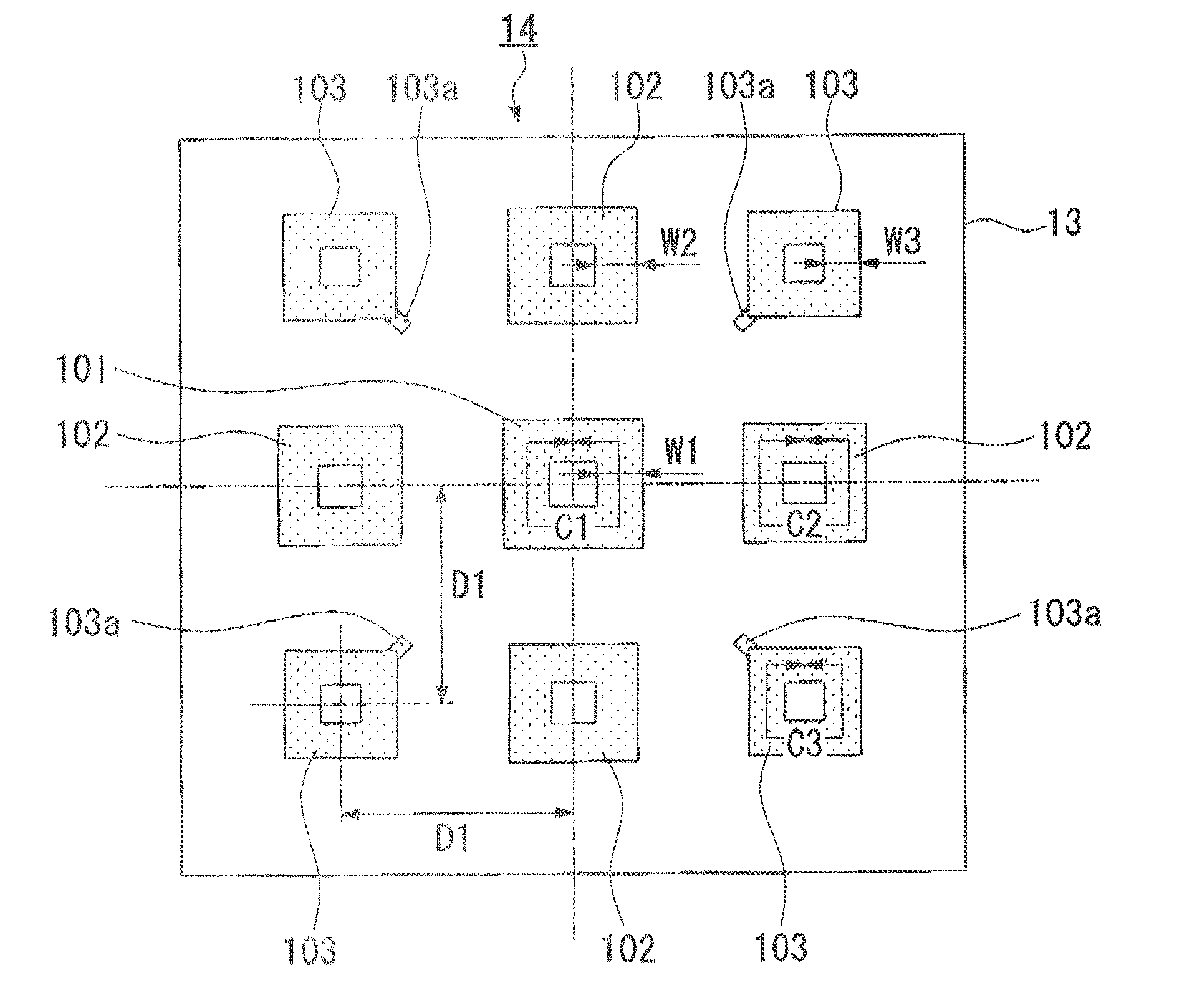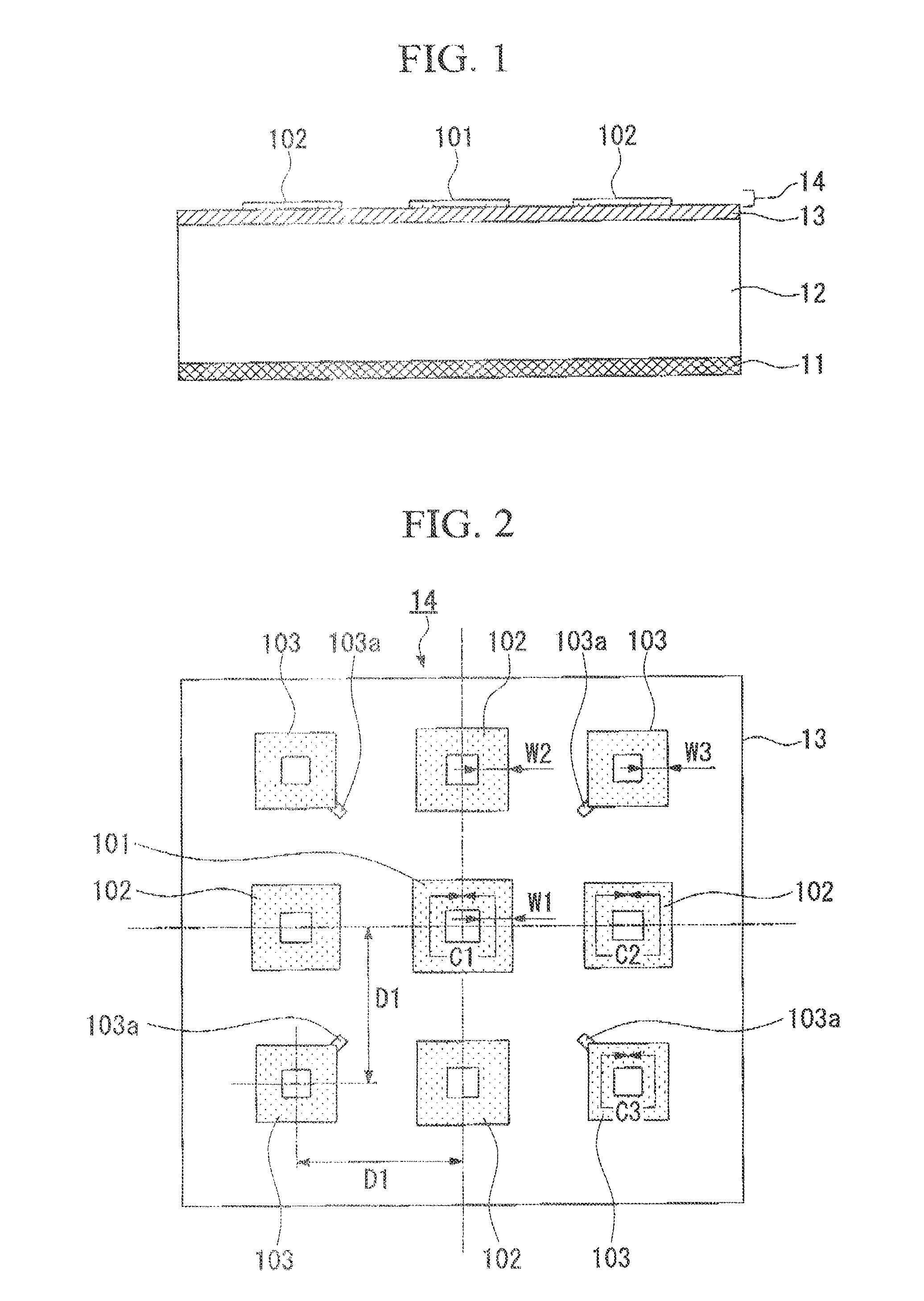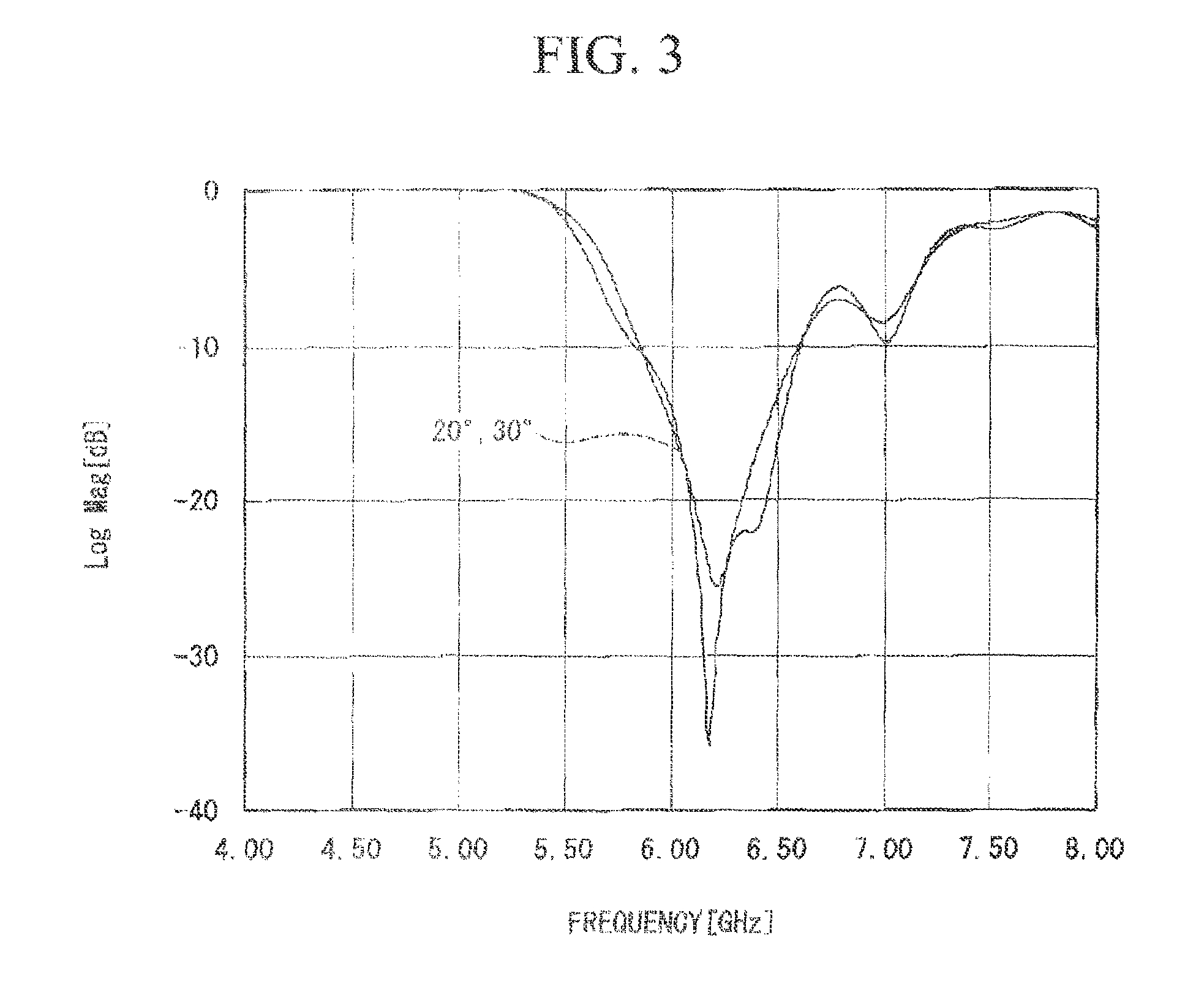Wave absorber
a technology of absorber and wave, applied in the direction of electrical equipment, individually energised antenna arrays, antennas, etc., can solve the problems of deterioration of communication quality, increased weight, and need for more thickness, so as to reduce weight, thin thickness, and thin size
- Summary
- Abstract
- Description
- Claims
- Application Information
AI Technical Summary
Benefits of technology
Problems solved by technology
Method used
Image
Examples
first embodiment
[0100]FIG. 1 is a cross-sectional view showing schematic features of a wave absorber of the first embodiment of the present invention. A wave absorber of the present embodiment includes a sequentially laminated structure including a conductor layer (11) formed of a copper foil having a thickness of 18 μm; a PC (polycarbonate) substrate (12) having a thickness of 2.0 mm, which forms a first dielectric layer A; a BT (bismaleimide-trazine) substrate (13) having a thickness of 0.3 mm, which forms a first dielectric layer B; and a patterned layer (14) in which a plurality of loop patterns, which is formed of a copper foil and is different with respect to a shape thereof, is placed periodically.
[0101]FIG. 2 is a plan view of the wave absorber illustrated in FIG. 1, and shows detailed features of a patterned layer (14). The patterned layer (14) includes a plurality of loop patterns (101, 102, and 103) formed on the upper surface of the BT substrate (13). Each of loop patterns (101, 102, an...
second embodiment
[0111]FIG. 4 is a cross-sectional view showing schematic features of a wave absorber of the second embodiment of the present invention. A wave absorber of the present embodiment includes a sequentially laminated structure including a grating-shaped conductor layer (21) formed by using a conductive mesh cross; a PC (polycarbonate) substrate (22) having a thickness of 3.7 mm, which forms a first dielectric layer A; a PET (polyethylene terephthalate) substrate (23) having a thickness of 0.1 mm, which forms a first dielectric layer B; a patterned layer (24) in which a plurality of loop patterns, which is formed of ITO (Indium Tin Oxide) having a surface resistivity (sheet resistance) of 10 [Ω / □] and is different with respect of a shape thereof, is placed periodically; and a PC substrate (25) having a thickness of 0.3 mm.
[0112]Herein, a grating-shaped conductor layer (21) is formed with a line width of about 30 μm and a central line spacing of 0.254 mm, and has a function to totally refl...
third embodiment
[0118]FIG. 7 is a cross-sectional view showing schematic features of a wave absorber of the third embodiment of the present invention. A wave absorber of the present embodiment includes a sequentially laminated structure including a grating-shaped conductor layer (32) formed by screen printing using a conductive silver plate on a PET substrate (31) as a second dielectric layer A; a PC substrate (33) having a thickness of 3.2 mm, which forms a first dielectric layer A; a PET substrate (34) having a thickness of 0.1 mm, which forms a first dielectric layer B; a patterned layer (35) in which a plurality of loop patterns, which is formed of ITO having a surface resistivity (sheet resistance) of 10 [Ω / □] and is different with respect to a shape thereof, is placed periodically; and a PC substrate (36) having a thickness of 0.3 mm.
[0119]Herein, a grating-shaped conductor layer (32) is formed with a line width of about 100 μm and a central line spacing of 1.4 mm, and has a function to total...
PUM
 Login to View More
Login to View More Abstract
Description
Claims
Application Information
 Login to View More
Login to View More - R&D
- Intellectual Property
- Life Sciences
- Materials
- Tech Scout
- Unparalleled Data Quality
- Higher Quality Content
- 60% Fewer Hallucinations
Browse by: Latest US Patents, China's latest patents, Technical Efficacy Thesaurus, Application Domain, Technology Topic, Popular Technical Reports.
© 2025 PatSnap. All rights reserved.Legal|Privacy policy|Modern Slavery Act Transparency Statement|Sitemap|About US| Contact US: help@patsnap.com



